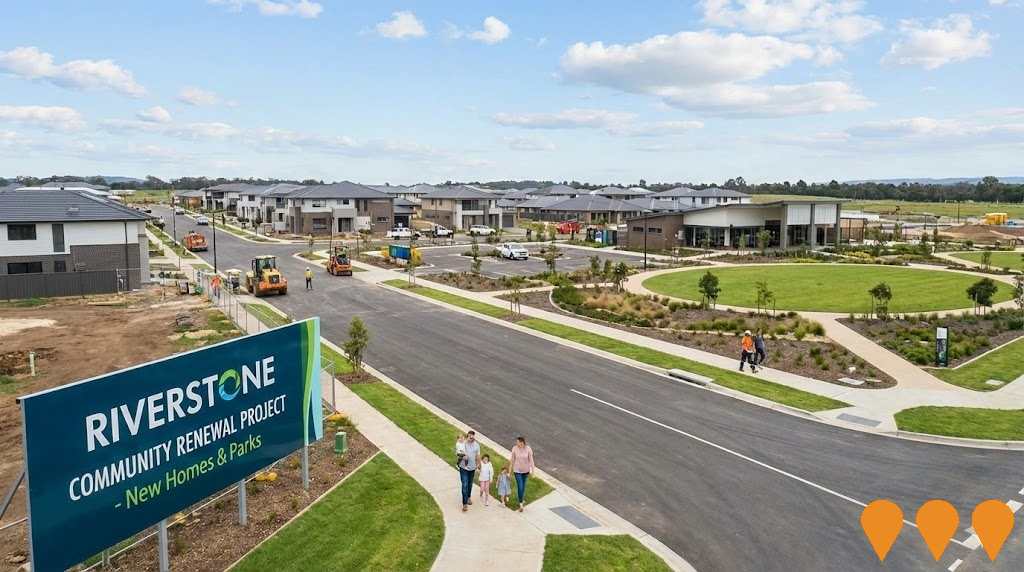Chart Color Schemes
est. as @ -- *
ABS ERP | -- people | --
2021 Census | -- people
Sales Activity
Curious about local property values? Filter the chart to assess the volume and appreciation (including resales) trends and regional comparisons, or scroll to the map below view this information at an individual property level.
Find a Recent Sale
Sales Detail
Population
Summerland Point - Gwandalan lies within the top quartile of areas nationally for population growth performance according to AreaSearch analysis of recent, and medium to long-term trends
Summerland Point - Gwandalan's population is around 6,940 as of Aug 2025. This reflects an increase of 448 people since the 2021 Census, which reported a population of 6,492 people. The change is inferred from the estimated resident population of 6,915 from the ABS as of June 2024 and an additional 205 validated new addresses since the Census date. This level of population equates to a density ratio of 756 persons per square kilometer. Summerland Point - Gwandalan's 6.9% growth since the 2021 census exceeded the SA4 region (3.1%) and the SA3 area, marking it as a growth leader in the region. Population growth for the area was primarily driven by interstate migration that contributed approximately 67.1% of overall population gains during recent periods.
AreaSearch is adopting ABS/Geoscience Australia projections for each SA2 area, released in 2024 with 2022 as the base year. For areas not covered by this data, AreaSearch utilises NSW State Government's SA2 level projections, released in 2022 with 2021 as the base year. Growth rates by age group from these aggregations are applied to all areas for years 2032 to 2041. Based on latest population numbers, an above median population growth is projected, with the area expected to grow by 1,269 persons to 2041, resulting in a total increase of 17.9% over the 17 years.
Frequently Asked Questions - Population
Development
AreaSearch assessment of residential development activity positions Summerland Point - Gwandalan among the top 25% of areas assessed nationwide
Summerland Point - Gwandalan has granted around 70 residential property approvals per year over the past five financial years, totalling 353 homes. In FY26, 26 approvals have been recorded so far. On average, 1.8 people move to the area annually for each dwelling built between FY21 and FY25, indicating balanced supply and demand with stable market conditions. The average construction cost value of new homes is $479,000, aligning with regional trends.
This financial year has seen $460,000 in commercial approvals, reflecting the area's residential nature. Compared to Greater Sydney, Summerland Point - Gwandalan records 149.0% more new home approvals per capita, offering buyers greater choice. New building activity comprises 87.0% standalone homes and 13.0% townhouses or apartments, maintaining the area's traditional low-density character focused on family homes. With approximately 74 people per approval, Summerland Point - Gwandalan is a developing area expected to grow by 1,244 residents by 2041.
At current development rates, new housing supply should meet demand comfortably, providing good conditions for buyers and potentially supporting growth beyond current population projections.
Frequently Asked Questions - Development
Infrastructure
Summerland Point - Gwandalan has strong levels of nearby infrastructure activity, ranking in the top 40% nationally
Changes to local infrastructure significantly influence an area's performance. AreaSearch has identified one major project expected to impact the area. Key projects are Crangan Bay Residential Estate, South East Growth Area Plan, Central Coast Desalination Plant, and Draft Greater Newcastle Metropolitan Plan 2036. The following list details those most relevant:.
Professional plan users can use the search below to filter and access additional projects.
INFRASTRUCTURE SEARCH
 Denotes AI-based impression for illustrative purposes only, not to be taken as definitive under any circumstances. Please follow links and conduct other investigations from the project's source for actual imagery. Developers and project owners wishing us to use original imagery please Contact Us and we will do so.
Denotes AI-based impression for illustrative purposes only, not to be taken as definitive under any circumstances. Please follow links and conduct other investigations from the project's source for actual imagery. Developers and project owners wishing us to use original imagery please Contact Us and we will do so.
Frequently Asked Questions - Infrastructure
Hunter-Central Coast Renewable Energy Zone
The Hunter-Central Coast Renewable Energy Zone (REZ) is a major infrastructure initiative designed to facilitate the transition to renewable energy in the Hunter and Central Coast regions. The project involves the construction of two new energy hubs (substations) at Sandy Creek (Muswellbrook) and Antiene (Singleton), upgrades to existing substations, and the augmentation of 85km of sub-transmission lines between Kurri Kurri and Muswellbrook. This network infrastructure will provide 1GW of additional capacity by 2028, enabling the connection of large-scale wind, solar, and battery storage projects. EnergyCo NSW serves as the infrastructure planner, with Ausgrid appointed as the network operator. Early works and site establishment commenced in 2025 following planning approval, with full network capacity expected by mid-2028. The project is expected to catalyse over $3.9 billion in investment across the region.

Central Coast Desalination Plant
A proposed 30 ML/day reverse osmosis desalination plant to be built adjacent to the existing Toukley Sewage Treatment Plant. The project will provide a climate-independent water supply for the Central Coast region during severe drought, using a direct ocean intake between Jenny Dixon Beach and Pelican Point Beach and discharging brine via the existing Norah Head ocean outfall. The plant is designed to improve water security and system resilience for up to 250,000 residents.
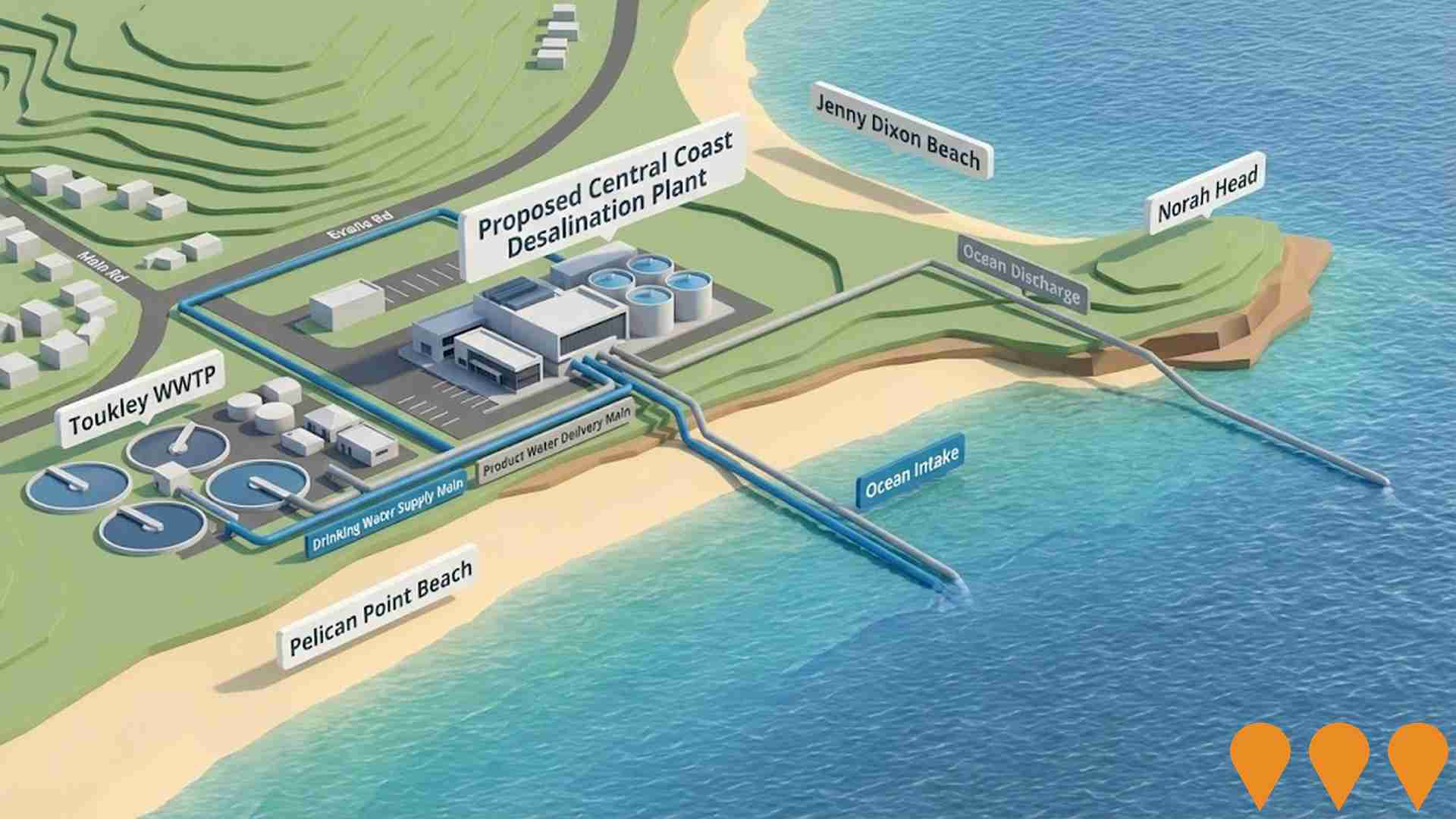
High Speed Rail - Newcastle to Sydney (Stage 1)
The first stage of the proposed National High Speed Rail network aims to connect Newcastle to Sydney via the Central Coast, reducing travel time to approximately one hour with trains reaching speeds up to 320 km/h. The project is focused on the development phase, which includes design refinement, securing planning approvals, and corridor preservation. It is being advanced by the Australian Government's High Speed Rail Authority (HSRA). Stations are planned for Broadmeadow, Lake Macquarie, Central Coast, and Central Sydney. The long-term vision is a national network connecting Brisbane, Sydney, Canberra, and Melbourne.
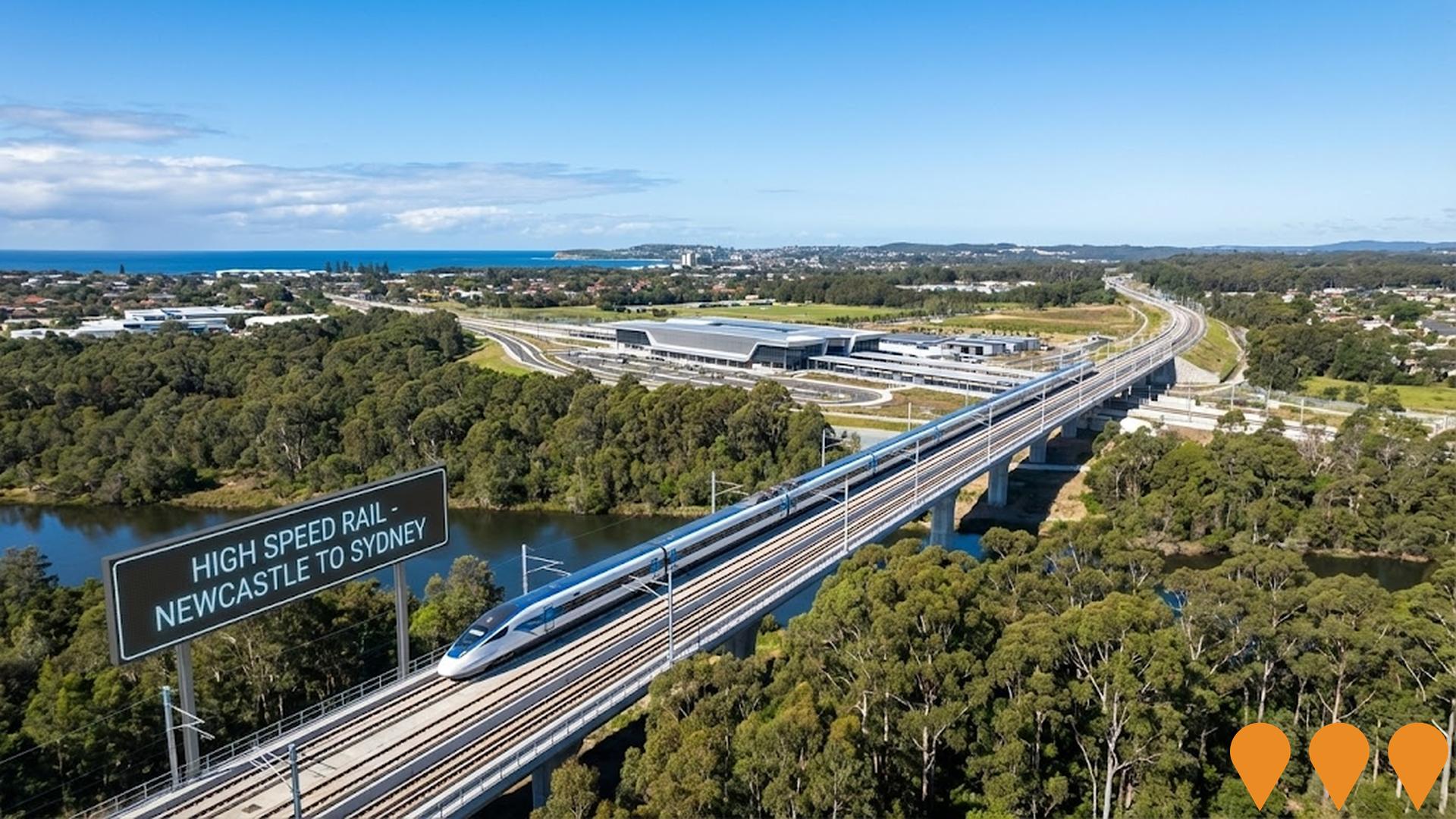
Low and Mid-Rise Housing Policy
State-wide NSW planning reforms via amendments to the State Environmental Planning Policy to enable more diverse low and mid-rise housing (dual occupancies, terraces, townhouses, manor houses and residential flat buildings up to 6 storeys) in well-located areas within 800 m of selected train, metro and light-rail stations and town centres. Stage 1 (dual occupancies in R2 zones statewide) commenced 1 July 2024. Stage 2 (mid-rise apartments, terraces and dual occupancies near stations) commenced 28 February 2025. Expected to facilitate up to 112,000 additional homes over the next five years.
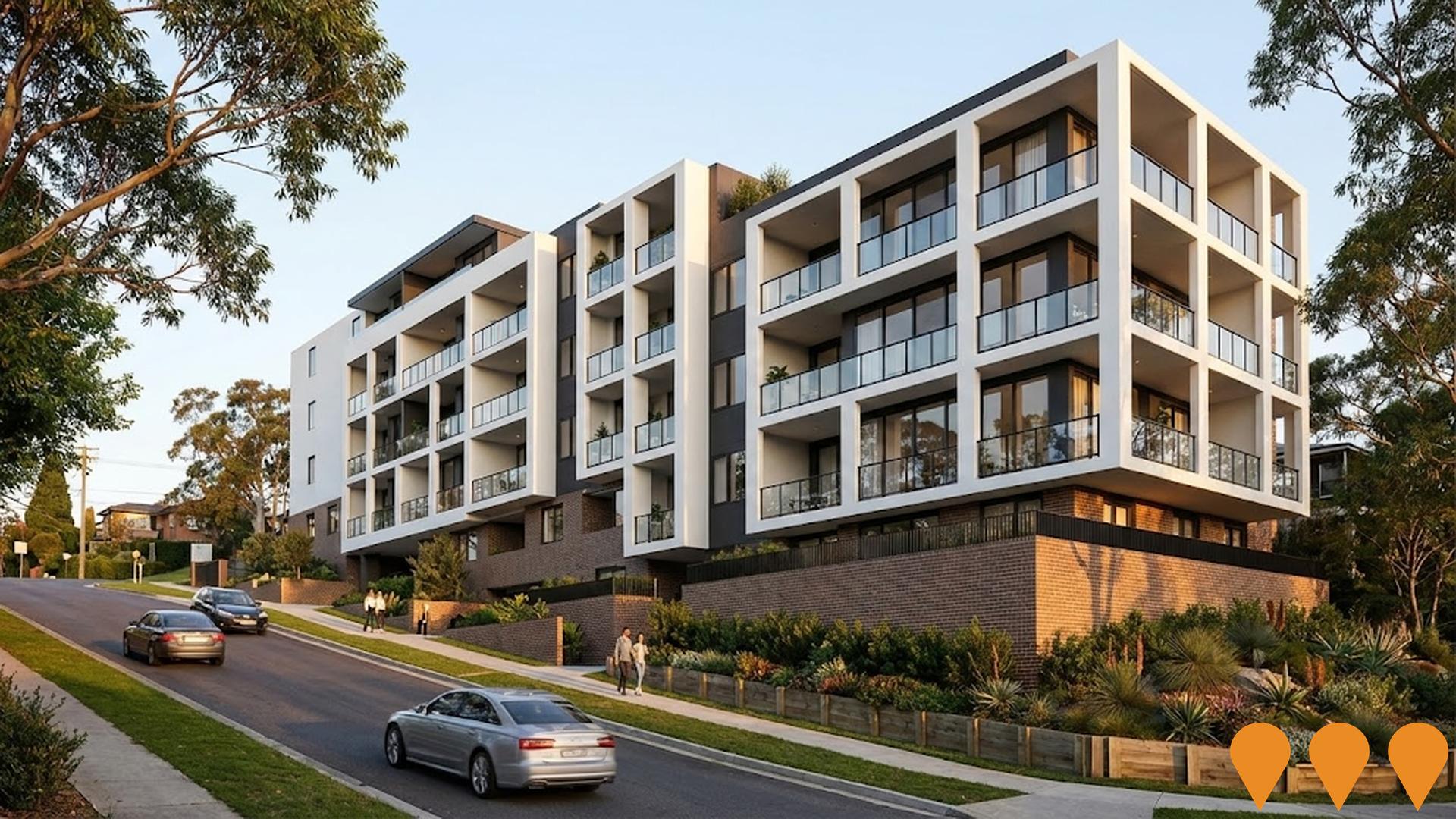
Crangan Bay Residential Estate
A 623 lot masterplanned environmentally inspired residential estate on the Central Coast, surrounded by National Parks and enjoying nearly 1 km of lakefront reserve on Lake Macquarie. The estate offers large, easy-to-build fully serviced home sites with stages being released progressively. Stages 1 and 2 are complete and registered. Stage 3/4 is completed with registration in progress, and Stage 5 is currently selling off the plan with registration due late 2026. The estate includes a children's playground, community spaces, and a lakeside boardwalk/pathway. Project updates are as current as July 2025.
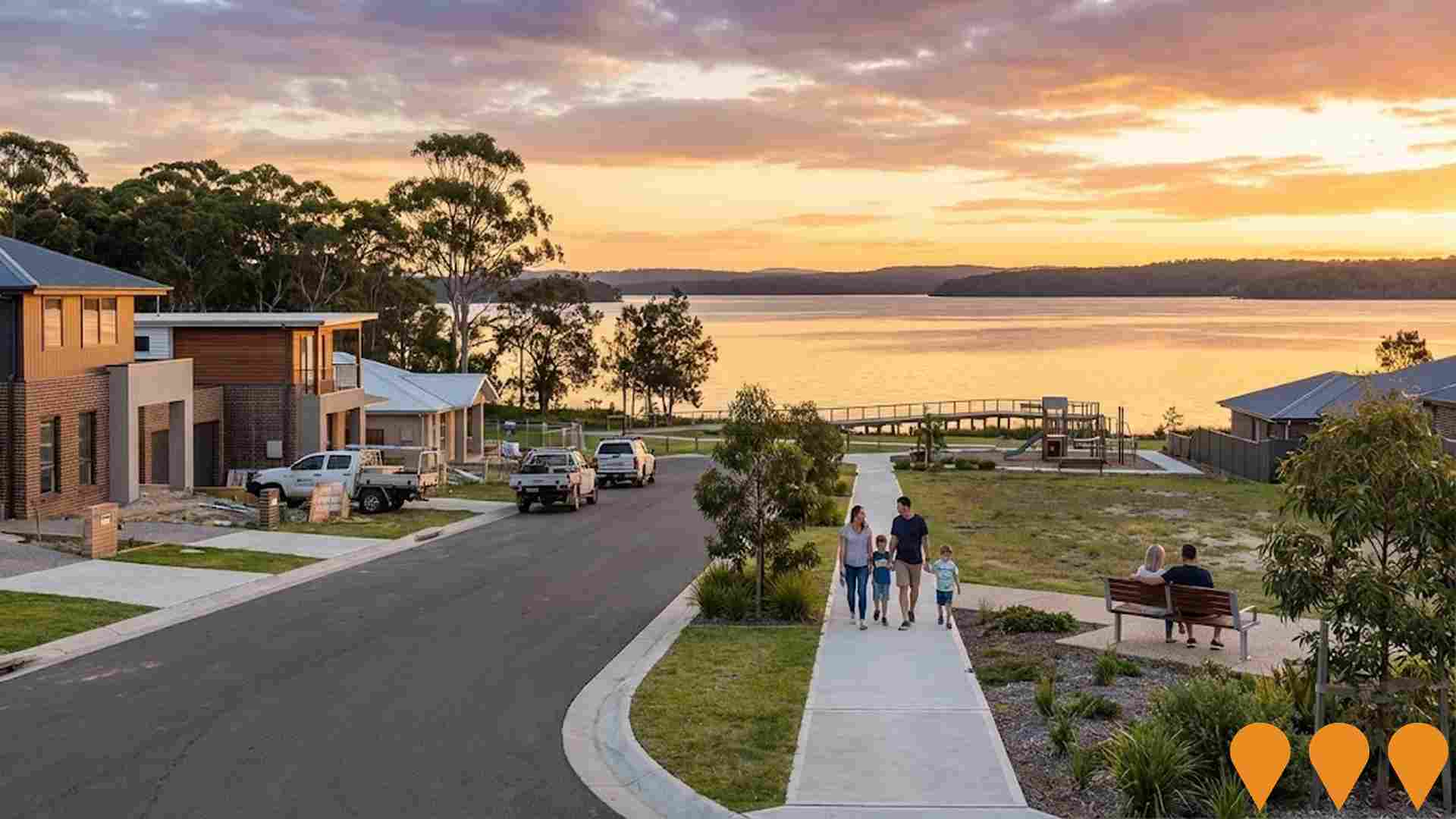
Newcastle-Sydney and Wollongong-Sydney Rail Line Upgrades
Program of upgrades to existing intercity rail corridors linking Newcastle-Central Coast-Sydney and Wollongong-Sydney to reduce travel times and improve reliability. Current scope includes timetable and service changes under the Rail Service Improvement Program, targeted network upgrades (signalling, power, station works) and the introduction of the Mariyung intercity fleet on the Central Coast & Newcastle Line, alongside Federal planning led by the High Speed Rail Authority for a dedicated Sydney-Newcastle high speed corridor.
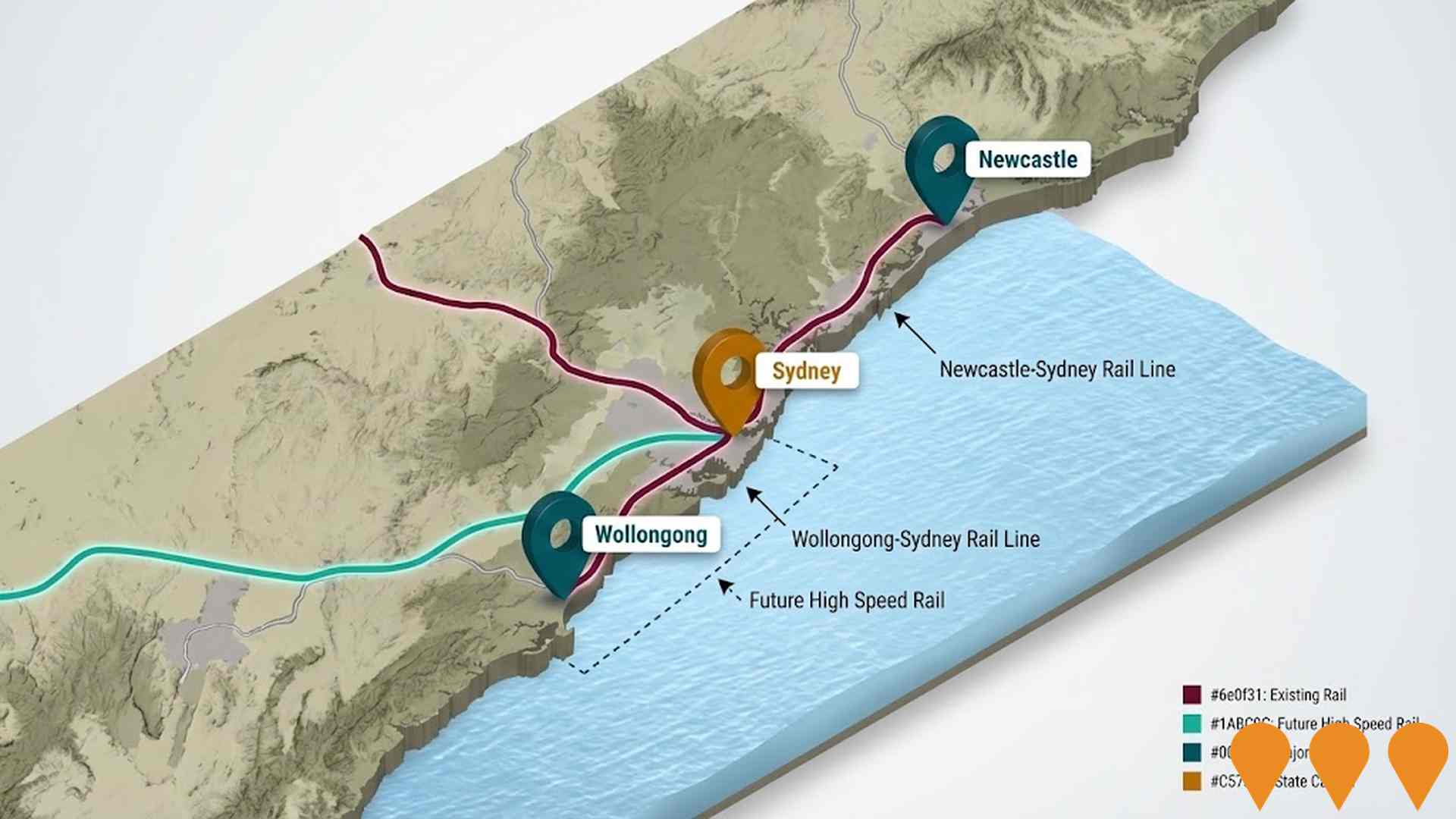
Newcastle Offshore Wind Project
The Newcastle Offshore Wind project proposes a floating wind farm off Newcastle, NSW, with an expected capacity of up to 10 gigawatts, pending a Scoping Study's results.
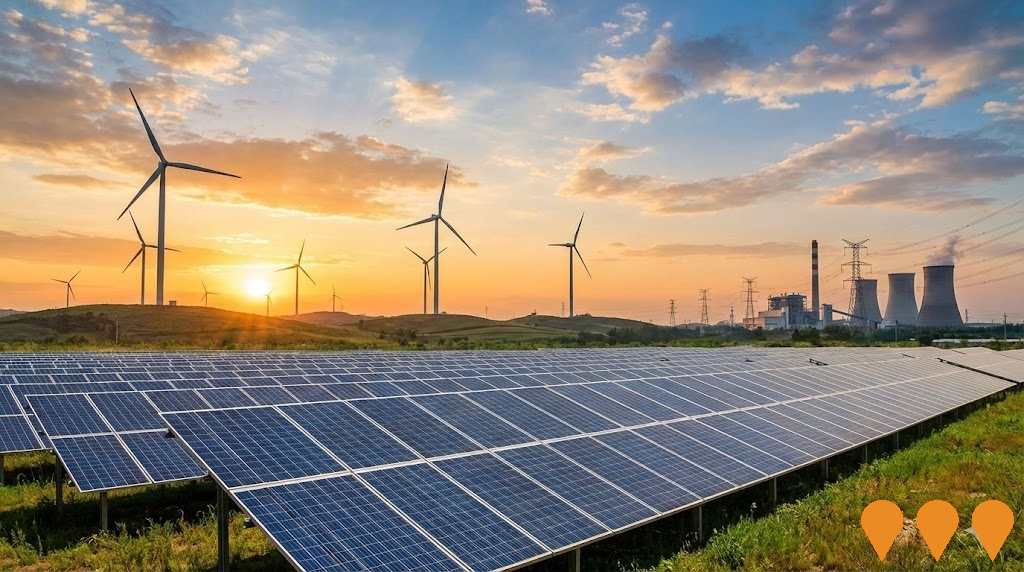
NSW Heavy Vehicle Rest Stops Program (TfNSW)
Statewide Transport for NSW program to increase and upgrade heavy vehicle rest stopping across NSW. Works include minor upgrades under the $11.9m Heavy Vehicle Rest Stop Minor Works Program (e.g. new green reflector sites and amenity/signage improvements), early works on new and upgraded formal rest areas in regional NSW, and planning and site confirmation for a major new dedicated rest area in Western Sydney. The program aims to reduce fatigue, improve safety and productivity on key freight routes, and respond to industry feedback collected since 2022.

Employment
Employment performance in Summerland Point - Gwandalan has been broadly consistent with national averages
Summerland Point - Gwandalan has a balanced workforce with white and blue collar jobs. Essential services sectors are well-represented.
The unemployment rate was 3.3% as of June 2021. Employment grew by 1.9% in the past year. As of June 2025, there were 3,158 residents employed with an unemployment rate of 3.3%, which is 0.9% below Greater Sydney's rate of 4.2%. Workforce participation was at 53.3%, compared to Greater Sydney's 60.0%.
Key industries include health care & social assistance, construction, and retail trade. Construction employment levels were at 1.9 times the regional average. Professional & technical services had only 4.4% of the workforce, compared to 11.5% in Greater Sydney. The area offers limited local employment opportunities. Over June 2024 to June 2025, employment increased by 1.9%, labour force by 2.7%, leading to a 0.8 percentage point rise in unemployment. Greater Sydney had employment growth of 2.6% and labour force growth of 2.9%, with a 0.3 percentage point rise in unemployment. Jobs and Skills Australia projects national employment growth at 6.6% over five years and 13.7% over ten years. Applying these projections to Summerland Point - Gwandalan's employment mix suggests local growth of approximately 6.4% over five years and 13.4% over ten years.
Frequently Asked Questions - Employment
Income
Income levels sit below national averages according to AreaSearch assessment
Summerland Point - Gwandalan's median income among taxpayers was $48,369 in financial year 2022. The average income stood at $58,775 during the same period. In comparison, Greater Sydney's median and average incomes were $56,994 and $80,856 respectively. Based on a Wage Price Index growth of 12.61% since financial year 2022, estimated median income is approximately $54,468 by September 2025, with average income at around $66,187. Census data shows that incomes in Summerland Point - Gwandalan rank modestly, between the 23rd and 30th percentiles for household, family, and personal incomes. Income analysis reveals that 31.9% of the population falls within the $1,500 - $2,999 income range, with 2,213 individuals in this category. This is consistent with broader trends across the surrounding region, where 30.9% fall into the same income bracket. Housing affordability pressures are severe, with only 83.0% of income remaining after housing costs, ranking at the 28th percentile.
Frequently Asked Questions - Income
Housing
Summerland Point - Gwandalan is characterized by a predominantly suburban housing profile, with above-average rates of outright home ownership
Summerland Point - Gwandalan's dwellings, as per the latest Census, consisted of 96.5% houses and 3.5% other dwellings (semi-detached, apartments, 'other' dwellings). This compares to Sydney metro's 83.2% houses and 16.7% other dwellings. Home ownership in Summerland Point - Gwandalan stood at 40.1%, with mortgaged dwellings at 39.7% and rented ones at 20.3%. The median monthly mortgage repayment was $1,753, below Sydney metro's average of $1,900. Median weekly rent was $395, slightly higher than Sydney metro's $385. Nationally, Summerland Point - Gwandalan's mortgage repayments were lower than the Australian average of $1,863, while rents exceeded the national figure of $375.
Frequently Asked Questions - Housing
Household Composition
Summerland Point - Gwandalan has a typical household mix, with a fairly typical median household size
Family households account for 74.9% of all households, consisting of 27.8% couples with children, 33.0% couples without children, and 13.0% single parent families. Non-family households comprise the remaining 25.1%, with lone person households at 23.1% and group households making up 2.2% of the total. The median household size is 2.5 people, which aligns with the Greater Sydney average.
Frequently Asked Questions - Households
Local Schools & Education
Summerland Point - Gwandalan faces educational challenges, with performance metrics placing it in the bottom quartile of areas assessed nationally
The area faces educational challenges with university qualification rates at 11.4%, significantly below the Greater Sydney average of 38.0%. This presents both a challenge and an opportunity for targeted educational initiatives. Bachelor degrees are most common at 8.2%, followed by postgraduate qualifications (1.6%) and graduate diplomas (1.6%). Trade and technical skills are prominent, with 46.8% of residents aged 15+ holding vocational credentials - advanced diplomas (9.3%) and certificates (37.5%).
Educational participation is high at 25.8%, including primary education (9.6%), secondary education (7.3%), and tertiary education (2.5%). Gwandalan Public School serves the area, with an enrollment of 348 students as of a recent report. The school focuses exclusively on primary education, with secondary options available in surrounding areas from 2010 onwards. Limited local school capacity (5.0 places per 100 residents vs regional average of 13.6) means many families travel to nearby areas for schooling.
Frequently Asked Questions - Education
Schools Detail
Nearby Services & Amenities
Transport
Transport servicing is low compared to other areas nationally based on assessment of service frequency, route connectivity and accessibility
Transport analysis shows 32 active stops operating between Summerland Point and Gwandalan, served by a mix of bus routes. These stops are covered by 22 individual routes offering 234 weekly passenger trips in total. Transport accessibility is rated good, with residents typically located 204 meters from the nearest stop.
Service frequency averages 33 trips per day across all routes, equating to approximately 7 weekly trips per stop.
Frequently Asked Questions - Transport
Transport Stops Detail
Health
Health performance in Summerland Point - Gwandalan is well below average with prevalence of common health conditions notable across both younger and older age cohorts
Health data indicates significant health challenges in Summerland Point - Gwandalan. Both younger and older age groups show high prevalence of common health conditions.
Approximately 49% (~3,407 people) have private health cover, lower than the national average of 55.3%. The most prevalent medical issues are arthritis (11.4%) and mental health concerns (9.5%). About 61.0% report being free from medical ailments, similar to Greater Sydney's 61.5%. The area has a higher proportion of residents aged 65 and over at 24.3% (1,686 people) compared to Greater Sydney's 22.3%. Senior health outcomes present challenges broadly in line with the general population's health profile.
Frequently Asked Questions - Health
Cultural Diversity
Summerland Point - Gwandalan is considerably less culturally diverse than average when assessed alongside AreaSearch's national rankings for language and cultural background related metrics
Summerland Point-Gwandalan had a cultural diversity index below average, with 88.9% of its population born in Australia, 92.9% being citizens, and 96.1% speaking English only at home. Christianity was the predominant religion, accounting for 56.6% of the population, slightly higher than the Greater Sydney average of 56.2%. The top three ancestry groups were English (31.7%), Australian (31.1%), and Irish (9.2%).
Notably, Maltese ethnicity was overrepresented at 1.8%, compared to the regional average of 1.0%. Australian Aboriginal and Hungarian ethnicities also showed notable representation, with 4.5% and 0.3% respectively, similar or slightly higher than their regional counterparts.
Frequently Asked Questions - Diversity
Age
Summerland Point - Gwandalan hosts an older demographic, ranking in the top quartile nationwide
The median age in Summerland Point - Gwandalan is 45 years, which is significantly higher than Greater Sydney's average of 37 years and Australia's average of 38 years. Compared to Greater Sydney, Summerland Point - Gwandalan has a higher proportion of residents aged 75-84 (9.4%) but fewer residents aged 25-34 (10.0%). According to the 2021 Census, the age group 75 to 84 increased from 7.3% to 9.4%, while the age group 15 to 24 rose from 10.8% to 11.9%. Conversely, the age groups 65 to 74 and 45 to 54 decreased from 13.5% to 12.3% and 13.6% to 12.4%, respectively. By 2041, demographic projections indicate significant shifts in Summerland Point - Gwandalan's age structure. The 65 to 74 age group is projected to grow by 32%, reaching 1,130 from 852. Notably, the combined age groups of 65+ will account for 59% of total population growth, reflecting the area's aging demographic profile. In contrast, the age group 15 to 24 is projected to decrease by 7 residents.
